The Beginnings Of Francois Paul Journe

At Baselworld 2000, a jeweller walked into the booth of independent watchmaking brand F.P.Journe. He purchased all three models that the brand had on display that day, namely the Chronometre Souverain, the Resonance and a Grand Petite Sonnerie. In fact, F.P.Journe sold 100 pieces of their Resonance watch and another 100 of their tourbillon pieces during that very fair. Safe to say, Francois Paul Journe had made an official buzz in the world of high-end watchmaking.
Today, F.P.Journe timepieces are celebrated and sought-after the world over, with a demand so high that they now sell for astronomically higher prices than the brand would have ever imagined. So what makes them so unique? It may have a little something to do with the fact that these watches combine a vintage design aesthetic with modern technology. While they started out using brass, they have now transitioned to gold. The uncompromising attention to minute details has further led to the skyrocketing of their value and demand.
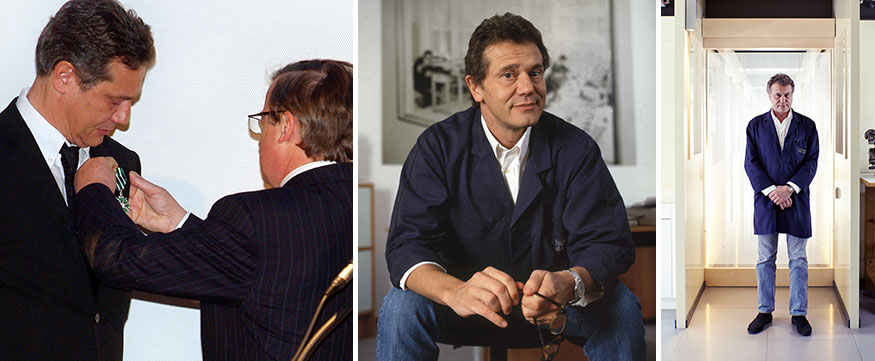
Success such as this does not come overnight. It takes years of perseverance, an in-depth understanding of the subject, and an unwavering faith in one's ability to be truly great. This innovative and influential watchmaker embodies all of these qualities in abundance. I shall now attempt to put forth the inspiring story that is the success of F.P.Journe.
The early years
Francois Paul Journe was not born into watchmaking royalty nor was he a star student of horology. After he quit school in his early teens, his mother sent him to learn the art of repairing and restoring clocks and pocket watches from his uncle Marcel Journe.
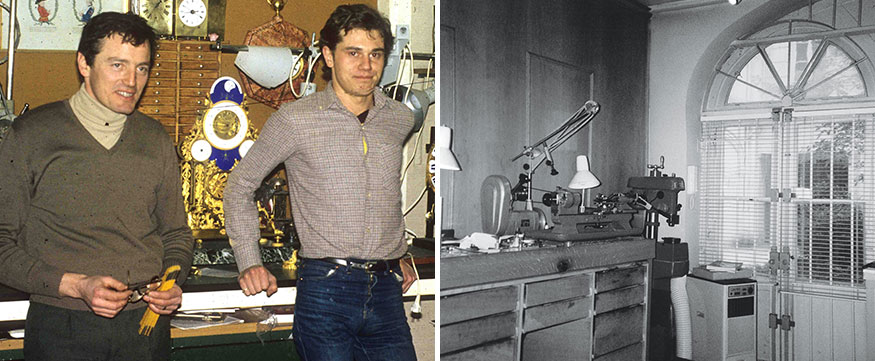
Young Journe with uncle Marcel workshop at rue de Verneuil.
Marcell was a highly skilled clock restorer known to work on time pieces such as those made by Janvier and Breguet. When Uncle Michel noticed a deep passion for horology in young Journe, he convinced the latter’s mother to send him to the Lapperine School of Technical Training to further his knowledge on the subject. Unfortunately, Journe’s volatile nature had him expelled from this school but not from the world of horology.
Moving back to his uncle's workshop in Paris, he continued to work and complete a two-year diploma course at the Ecole d’Horlogerie.
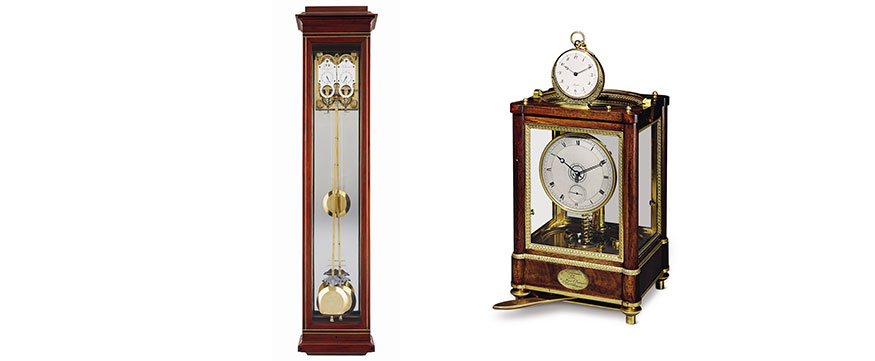
Early inspirations for Journe who eventually created his own movements based on the resonance phenomenon from masterpieces like the Bregeut Pendule Sympathique clock and a 1780 Antide Janvier Double Pendulum clock.
Having amassed vast experience and knowledge on the subject, F.P.Journe started working on complicated client watches his uncle repaired and serviced. One such client was Sir Cecil Clutton who was known to carry two pocket watches with him at all times. One was an 1823-make Breguet, and the other, a George Daniels. In all probability, Francois Paul Journe’s watch making ideas and designs that followed later were inspired from all that he admired about the above timepieces.
To begin with, tourbillon mechanisms housed in both the watches fuelled his desire to own a timepiece with the same complication. Unable to afford one at the time, he realised the only solution was to make one from scratch. As a result, five years later, at the age of 25, he completed his first pocket watch housing the extremely complicated tourbillon and a Detent escapement, all by himself.
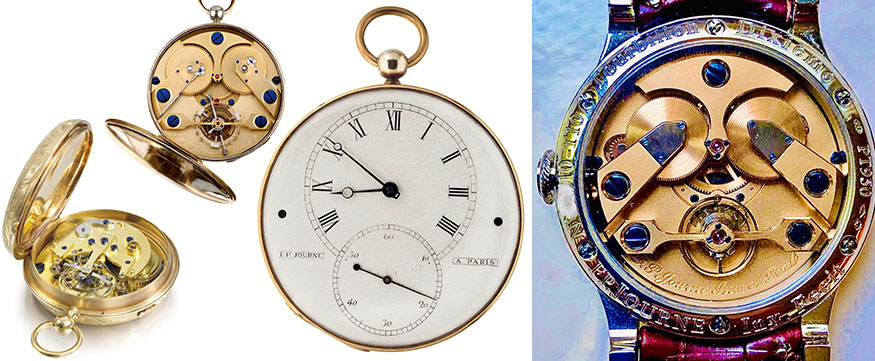
Bregeut’s pocket tourbillon that inspired Journe seen in image two and three, and lastly, the case back of the 30 year Anniversary edition of Journe’s first tourbillon pocket watch, this time made for the wrist.
Slowly but surely, watchmakers and collectors started to take notice of this young man’s prodigious talent and ability to produce high-end timepieces.
A year after building his first tourbillon watch, F.P.Journe was inspired by Abraham Louis Bregeut’s resonance clocks. He decided to recreate the phenomenon of resonance within the movement of a pocket watch. This uphill and almost impossible task was left unfinished only to finally see completion within the smaller case of a wrist watch many years later.
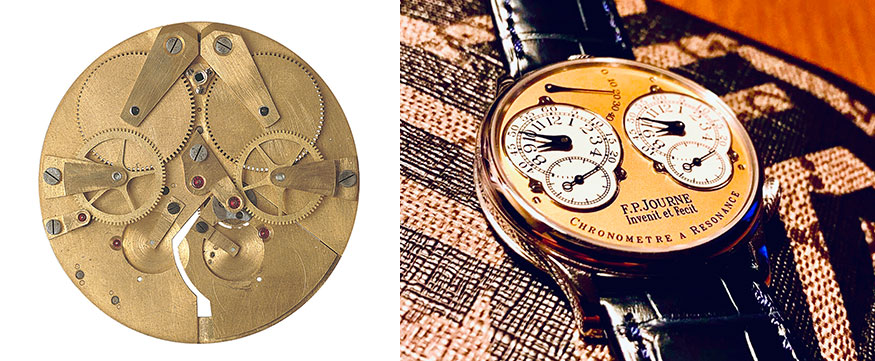
1983 Movement prototype for the Resonance pocket watch that sits unfinished in the draws of a Journe office contrasted with a Chronometre Resonance wrist watch from several years later.
A spark of imagination
In 1991, after several years of building commissioned pocket watches for connoisseurs and collectors, Journe finally released his first wrist watch — a platinum case with a gold movement tourbillon was showcased in an aperture on the dial of the watch. It also housed a constant force mechanism called the Remontoir d’Egalite and a power reserve indicator. This would be the first time that a constant force mechanism was integrated into a wrist watch. Unfortunately, the overly complicated timepiece showcased at Baselworld was met with a lack of interest and enthusiasm from brands who gave it little or no reception.
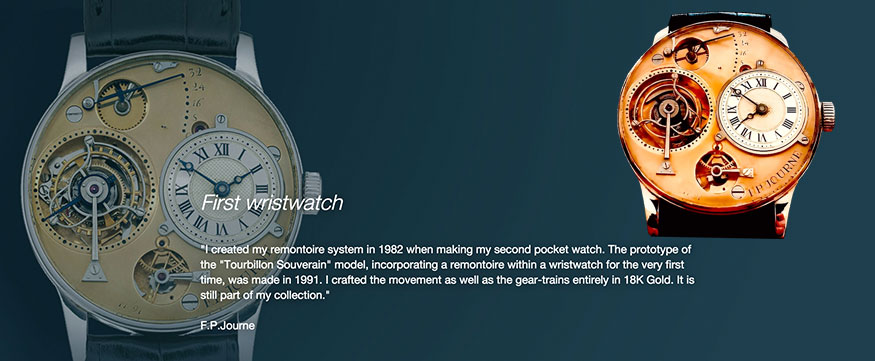
Image credit - @alexanderfriedman
It is said that the greatest of ideas come to you by surprise, when you least expect them to. On a hot summer afternoon in 1994, the hostess at a restaurant Journe and his friends were dining at came up to him and said, “What’s that watch you’re wearing? It's magnificent!” The fleeting interaction, albeit filled with praise for his very first wristwatch inspired Journe. Undeterred by the initial disappointment of Baselworld, and now tired of continually providing high-end calibres to big brands that took most of the credit for the watches’ success, F.P.Journe finally decided to launch his own brand.
The beginning of something new
Moving to a workshop in Geneva, Journe was raring to put forth all his ideas and inventions into the creation of innovative masterpieces. However, the income he earned from the sale of commissioned timepieces wasn’t enough to pursue his dream. A key turning point in Journe’s business module came from an ingenious idea from close friend, Camille Berthet. This became the force behind the creation of the first series of Journe watches, the ‘Souscription Series’.
As the name suggested, the business model was simple - a select few clients would pay for the manufacture and cost of making the watches, much like a subscription fee. In return, they would be offered a discount on the retail value of the timepiece. This prepaid purchase business model was similar to Abraham Louis Breguet’s practice, wherein an advance payment from clients funded the making of their watches.
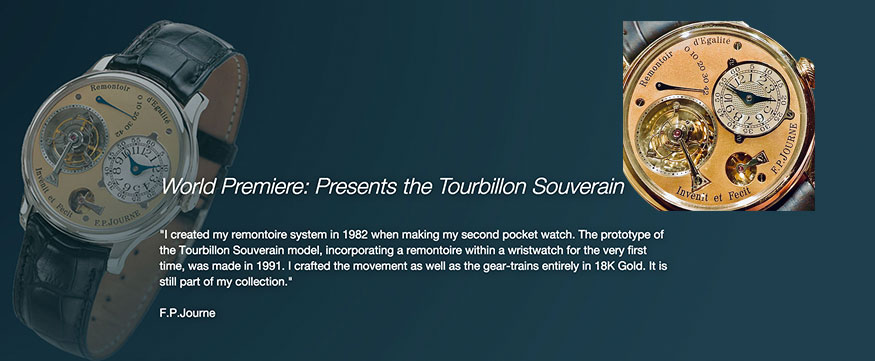
Absolute grail of Journe timepieces – the first Souscription Series of the Tourbillon Souverain’
20 ‘Tourbillon Souverain’ Souscription watches featuring a tourbillon, a remontoir d’egalite and a power reserve complication inspired by the design of Journe’s first wrist watch went on offer. These original twenty housed a rhodium-plated brass movement albeit with several hand finishing inconsistencies on the dial. Collectors found these unique irregularities on the dial and case even more alluring to the eye, which added value to their purchase. The sale of the Souscription series raised enough money to further produce timepieces built with ingenious innovations that are relevant to this day.
Then and now
Today, the latest iteration of the first series of Journe watches is seen on the shelves of F.P.Journe Boutiques around the world. Technological advances over the years have led to changes in both the design and movement construction. The original brass movement is now replaced by an 18 karat gold one.
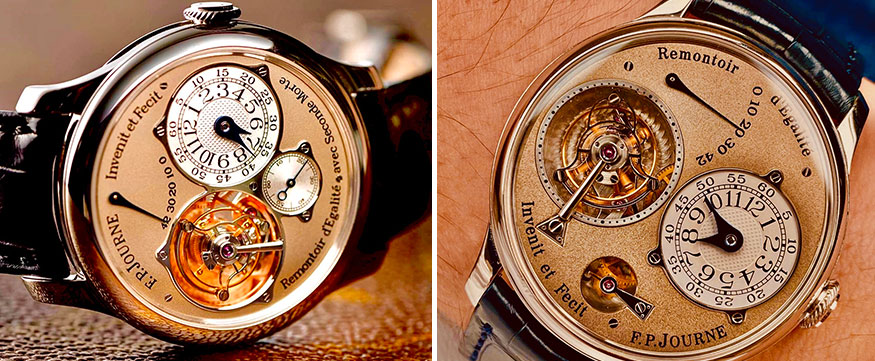
Image credit - @ytliub1130
However, the original superstar mechanisms of the movement still remain: the Tourbillon is now mounted vertically and is still showcased on the left of the dial at 9 o'clock. The Remontoir d’Egalite mechanism is housed under a dead second hand positioned at 6 o’clock on the dial. Separated from the tourbillon mechanism, time continues to be displayed on the right side of the dial at 3 o’clock.
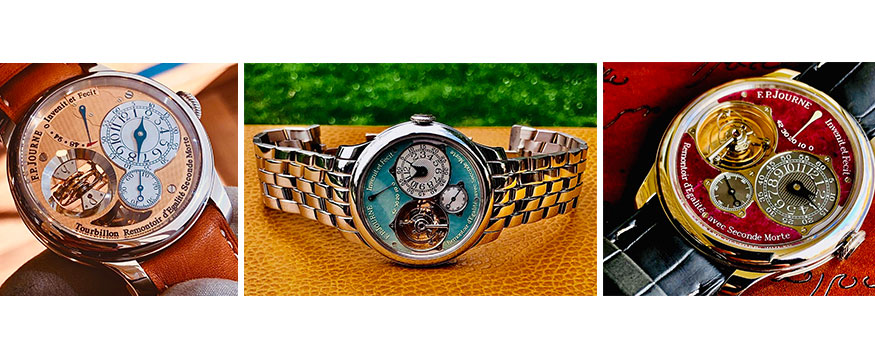
The new vertically mounted tourbillon along with a rare Jade and Ruby dials both found in the Tourbillon Souverain.
The cleverly positioned hour and minute hands enables the reading of time while not quite shooting the cuff off a dinner jacket, and without having to display the dial in its entirety to a chatty guest you may not want to offend. Ironic, this coming from the master watchmaker who does not suffer fools gladly, not an uncommon trait of many a gifted individual.
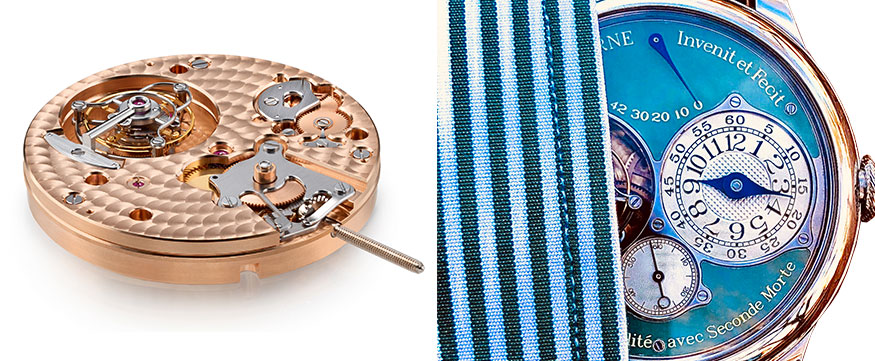
Over the years, F. P.Journe has created some of the most innovative timepieces including the Resonance, the Centigraph, the Grand Sonnerie and more, representing the highest standards of independent watchmaking. It is a well-known fact in watchmaking circles that he refuses to release a new timepiece until he’s convinced it comes bearing a unique innovation or design element.
Studying the life and work of Francois Paul Journe, it is patently obvious that success is rarely realised instantly. It takes years of perseverance and self-belief to realise one’s dream. This is an important lesson I learnt through the ebbs and flows of my swimming career as well. Francois Paul Journe’s relentless spirit should serve as a shining example to every young kid reading this blog. A reminder to never allow the naysayers of the world to convince you that you aren’t good enough to be who you choose to.
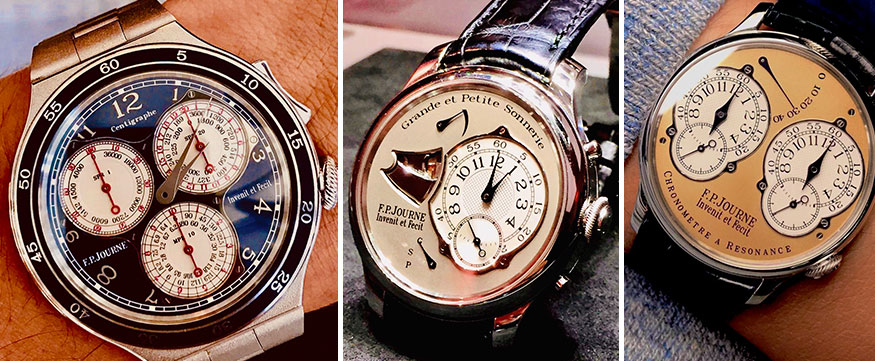
Highly sought after and rare timpeices from F.P.journe include the Grand Petite Sonnerie, the Centigraph and the Resonance models.
To me, his watches represent all that is classical in the world of high horology and I truly hope that while he continues to impress us all with his innovative timepieces, one of his timeless classics finds its way into my watch collection soon.
Special thanks to Mike @shani.watch for the most stunning pictures.

